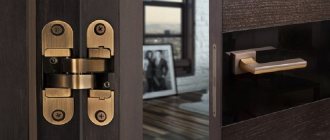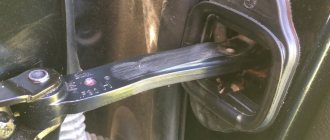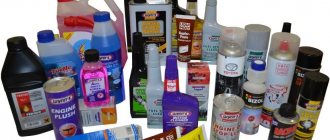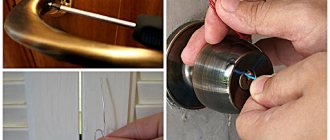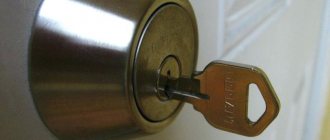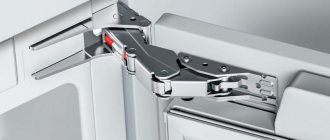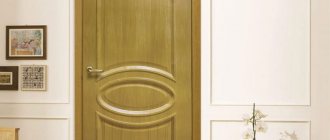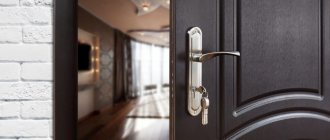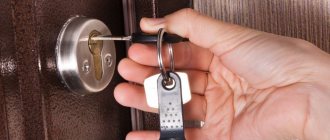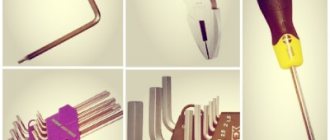Miscellaneous
A plastic door to a balcony or even the entrance to a private house is very convenient. Lightweight, aesthetically attractive fabric protects well from noise and cold. But the longer this product is used, the more likely a squeaking problem will occur.
Balcony plastic door
We fastened the hinges in reverse.
When installing the door leaf, you can fasten the hinges incorrectly, and then the doors will begin to creak. How to lubricate the hinges, and how to find out the cause of the squeak? It’s not difficult to find out, because it will immediately creak as soon as you try to open it or vice versa close it. It is possible and necessary to eliminate this defect yourself. First, remove it from the hinges and remove the hinges themselves. If the half-hinge, which with the “pin” is attached to the door, and the half-hinge “cup” is on the door frame. They need to be swapped to avoid squeaking in the future. After all, when the loops are secured in this way, the lubricant does not flow out of the “cup” half-loop, thereby prolonging its life.
But still, how to lubricate the hinges of interior doors? This process is not difficult at all; you need skillful and strong hands, and a lubricant.
Let's look at how you can lubricate door hinges to prevent them from squeaking.
Popular store products:
- Machine oil (also protects against metal corrosion);
- Sewing machine oils;
- Solidol, litol, cyatim (thick compositions, applied with a finger or a stick);
- Aerosols;
- Various special compositions for lubrication, WD-40 (available as spray and oil).
Popular lubricants
Popular folk remedies to combat squeaking:
- Graphite pencil shavings (soft grade);
- Vegetable and olive oil (do not use);
- Paraffin or wax (melted and warm).
If the door in the room creaks, what should you do? First of all, you need to find out the cause of the creaking, you also need to figure out what exactly is creaking in the canvas itself or the hinges.
The main causes of squeaking:
- When installing the new canvas, the installers did not lubricate the hinges (they should be lubricated);
- A common mistake is that the lubricant composition is not selected correctly (remove the old composition and apply a new one);
- There are no balls in the loops (you need to put the balls in their places);
- The covering material, when opening, touches the door and produces such a sound (remove excess with scissors);
- If it touches the platbands, it may not close tightly or with difficulty; it has increased in size due to moisture. You will have to replace it, but first get rid of excess moisture in the room;
- The ends of the canvas touch the platbands, then we increase the depth of the grooves for fastening;
- The hinges have become loose, they have worn out from time of use (install new ones);
- The hinges were loose. Lift up and tighten the screws thoroughly.
We have already figured out why the doors in the apartment creak and how to lubricate them, but read below how to do it.
For the ideal option, the canvas must be removed from the hinges and thoroughly cleaned of rust, then thoroughly coated with everything, and put back. But there is an easier way, it consists of several simple steps:
- Open the door wide;
- Lift it using the “lever” method, that is, insert, for example, a thick file under the end, with which you can lift the door leaf;
- And lubricate the rubbing parts, that is, the hinges, do this using an oil can or syringe. If you use a thick composition, you need to apply it with a stick. For safety reasons, it is better not to apply it with your fingers to avoid pinching. It doesn’t take much to drip and smear;
- Next, put everything in its original position, that is, lower it from the “lever”. And open and close several times so that the lubricant evenly wraps around our hinges from the inside. Remove excess with a dry cloth
Lever method
Of course, this will not last forever (since nothing lasts forever), time will pass and this lubricant will lose its properties, then it is necessary to repeat the procedure.
Methods
There are various methods for eliminating squeaking, which you need to familiarize yourself with in advance.
Without dismantling the door
A squeaky hinge can be lubricated without removing the door leaf. The lubrication procedure consists of the following sequential steps:
- opening the door;
- raising the canvas by 1-2 centimeters;
- removing old grease and debris from fittings;
- applying oil liquid;
- lowering the door.
With the canvas removed
Sometimes lifting the canvas is not enough and you have to remove it completely. To do this, the door is opened slightly and a metal lever is placed under it. Then, with its help, the canvas is lifted and removed from the hinges. Having got rid of the door, the hinges are treated with a lubricant.
Eliminating squeaking in plastic sheets
What to do if a plastic balcony door creaks? Let's find out the cause of the creaking, we already know how to do this.
What can cause it to squeak:
- Sagging and clinging to the threshold, this is due to the fact that the hinges have aged over time and deteriorated;
- Offset, it catches the frame. The fittings need to be adjusted.
- Makes a heart-rending sound when opening, the fittings need to be adjusted.
To eliminate these causes of squeaking, sagging and misalignment. For this work, you will need a marker that can be washed off with water and, when closed, outline the door structure. We compare these lines with the frame; when the doors are in good condition, the lines are parallel. If there is sagging, then adjust the upper hinge mechanism.
To perform these actions, the canvas is opened wide and fixed so that it does not close, and the decorative fittings are removed. The key is inserted into the screw we need for adjustment, and we turn it clockwise several times. This will help lift the sagging edge by pulling the door structure towards the jamb, thereby eliminating creaking.
If after performing these works the creaking does not disappear, then we will work on the mechanism of the bottom panel. Its difference from the top one is that it has 2 screws. The screw located on the top end lifts the door, and the one located on the side regulates its position.
Damage to PVC products requiring repair
Repairs are carried out in the following cases:
- glass unit cracked;
- the plastic has cracked or the seam has come apart;
- the fittings have become unusable;
- the hinges are torn out of place.
In such cases, independent repair is impossible. You will have to remove the balcony door and deliver it to the factory, where there is special equipment and spare parts.
Poor opening/closing of the sash
Some time after installation, the hinges begin to sag and the structure must be adjusted so that the sash fits tightly to the frame
If you do not pay attention to poor closure, the fittings will quickly fail due to deformation
If the screws are under plastic covers, remove them before starting work and put them back on at the end.
Draft
Many metal-plastic structures have a “summer” function. It consists in the fact that the windows are ventilated in a closed position. With the onset of cold weather, this function is removed. The second reason for a draft is damage to the seal. Rubber wears out after several years of use, so it is replaced. In order to increase the service life, the rubber is lubricated with special silicone compounds.
Replacement of accessories
The metal insides of PVC windows and doors are replaced with similar ones in design and size. Sometimes it is necessary to lubricate the fittings with technical oil. But if it breaks or becomes deformed, it is changed, since it is impossible to adjust the position of the sash.
Elimination of scratches and chips
Small cracks that appear from impacts are covered with a special compound called “Cosmofen”. After this, the area is lubricated with liquid plastic.
Large cracks are repaired with white sealant. After filling and drying, the area is sanded. If a colored film is glued to the plastic, then the inside is still white. After restoration, the damaged area is painted over with a construction pencil. The film is glued to the profile at a high temperature, which cannot be achieved at home.
Replacement of glass unit
Even double or triple glazed windows with 5mm glass thickness can break if the glass is not laminated. You'll have to order a new one.
To insert a double glazed window:
- remove the glazing beads that secure it in the opening;
- remove the old bag and rubber seal;
- install new glass and press the glazing beads back.
A rubber seal is installed along with the bag.
The plastic balcony door creaks, what should I do?
The reasons for the squeak and step-by-step actions will be suggested by the technician. It could be:
- wear of fittings;
- lack of lubrication or drying out;
- factory defective hinges;
- subsidence of a new building in which plastic windows and doors are installed.
Most often the problem lies in the operation of the hinges.
The enemy of iron
We looked at a lot of ways to lubricate the door to prevent it from squeaking. But what is better not to lubricate? This is vegetable or olive oil, also Vaseline, these products will help, but only until they dry out. And they dry very quickly. This lubricant also quickly becomes dirty and also contributes to the development of metal corrosion. It is better not to use it so as not to harm the metal. How to get rid of a squeaking metal front door.
Related article: How to change the lock cylinder of the front door
The metal sheet is heavy, it is quite possible that it simply sagged. If this is not the case, it seems, then first you just need to lubricate the hinges with new grease, as I have already told you how to do this. Most often, these structures are welded together, that is, during installation, the hinges are already welded to the box and the canvas. If the lubricant does not help, the creaking does not disappear, your only option is to call the specialist who installed this low-quality door for you. If it is possible to return it to the store or exchange it, it is better to do so. If both options disappear, you will have to digest the loops, and whether you will do this yourself or a specialist, of course, is up to you.
I hope this article will help you and be useful in the future. Good luck!
Rules for performing work
You need to remove the plastic balcony door if one of the hinges is broken, or the door leaf requires repair. You also need to remove the door to lubricate the fastenings with oil. You can replace faulty fasteners without any problems, since the design is of high quality and mobility. It is enough to lubricate the door mechanism once a year. Thanks to this, the durability of the product increases.
It is necessary to remove the PVC entrance door leaf according to the rules. The entrance structure, unlike the balcony structure, is equipped with reinforced fastenings and a mechanism that protects against burglary. It has a lot of weight, so in such cases it is better to work with an assistant. The metal-plastic product is equipped with 3 fasteners.
Possible problems
There are many problems with PVC doors related to creaking, and this does not depend on the quality of the door and its installation. Over time, this design requires adjustment. In case of serious problems - the canvas has fallen off its hinges or the locking mechanism has broken - you cannot do without inviting a professional. A simple creaking or jamming can be repaired yourself.
Any door can creak, because the hinges of the plastic leaf are designed using an identical mechanism. Here are the reasons why metal-plastic doors creak:
- The sash is sagging and catches the threshold. This is due to the hinges not working properly. This defect must be eliminated, since over time it will lead to the formation of gaps between the frame and the canvas, and therefore to a violation of the heat and sound insulating properties.
- The doors “scrape” against the frame. This indicates displacement of the sash. To fix this problem, you will need to adjust the fittings.
- The handle doesn't work well. It can either close poorly or hang loose, while it does not fulfill its main task, that is, the opening/closing mechanism does not work. This is a consequence of improper installation of the locking mechanism.
- The door creaks or makes other unusual sounds when opening or closing. In this case, you will need to adjust it correctly in all respects.
Door adjustment
- No lubrication. For normal operation of the hinges, a means to facilitate their movement - lubrication - is necessary.
- Problems with the quality of loops. They may be incorrectly manufactured or installed incorrectly. In this case, no means or adjustments will help; they will have to be replaced. It is recommended to do the same if the loops have exhausted their service life.
- Rust on hinges. Oil and lubricant will help eliminate this.
How to lubricate a door so it doesn't squeak
Doors may squeak due to the gradual drying out of the factory hinge lubricant.
To eliminate this flaw yourself, the following means are most often used:
Aerosol WD. This substance is sold in automotive stores as a universal lubricant containing white spirit. It is very convenient to have a special dispenser
It is important to understand that you should not expect too long-lasting effects from WD, since it is designed to remove moisture from the surface before actual lubrication. There is oil in the aerosol, but its percentage does not exceed 20%
WD aerosol for lubricating door hinges
- Machine oil. We are talking about any type of oil that is used to lubricate automobile parts. However, it is better to choose more viscous substances (for example, motor lubricants). Litol, grease and cyatim are considered to be especially high quality, providing long-lasting protection against squeaking. Sewing machine oil is often used to eliminate squeaking loops due to its convenient packaging. Although this substance is not as thick as the same grease, it can eliminate the problem for several years.
Oil for lubricating door hinges
Folk remedies. In the old days, the problem of skip doors was solved by using vegetable oil, liquid soap or warm paraffin (wax)
Despite the availability of these means, they must be used extremely carefully, and only in cases where special means are not accessible. Each of them, in addition to the lubricating effect, also has a series of disadvantages
For example, wax and vegetable oil prevent door hinges from squeaking only for a short time (until they dry). Moreover, any food or cosmetic oil and fat tend to quickly accumulate dirt. As a result, metal surfaces lubricated in this way become more susceptible to corrosion.
Lubricating door hinges
- Graphite. To lubricate the loops, you can use the core of a simple soft pencil. After being removed from the wooden body, the rod is crushed and placed in the inter-hinge gap. After the blade is lowered, the pieces of the substance are crushed, resulting in the formation of a graphite lubricant that facilitates the friction effect.
Graphite from a regular pencil for lubricating door hinges
Lubricant
In most cases, problems with squeaking hinges are due to lack of lubrication. Various means will help remove squeaks, the most common of which are:
- Oil lubrication in plastic tubes. They are equipped with a long and narrow “spout” that helps to reach the most difficult to reach places. Such tubes of oil with a sharp spout will protect frames and the finishing of walls and ceilings from damage, because they allow the oil to get exactly where it is needed.
Oiler with a special thin spout
- If the product is not in a tube, but in a larger container, a syringe is used for processing. Before lubricating the hinges using this method, you need to lift them a little, which will open access to problem areas.
- Graphite lubricant. You can prepare such a product yourself by cutting graphite from a regular pencil and mixing the shavings with oil (any kind). The product is placed in the gaps between the hinges, which can be opened by lifting the canvas. When the door drops into place, the graphite will crumble.
- Litol, solid oil - this lubricant is widely used by motorists.
- VD-40 - this spray is simply irreplaceable if the fabric loops are one-piece. Since its properties allow it to penetrate into the most inaccessible places and remove rust.
Note! If the door squeaks and none of the above remedies are available, any oil will do. Vegetable, butter, margarine, even a piece of lard. But the option of using the oil at hand is a temporary measure until there is another remedy at hand, since such substances do not differ in the duration of action.
What types of lubricants should you avoid?
Even if a squeaky door is very annoying, there is no need to try to lubricate it with the first grease you come across.
It is highly undesirable to use organic substances - lard, butter and vegetable oil. They contain a large amount of water, which will interact with the metal and cause its slow corrosion. Over time, this will only make the squeak louder. Also, animal fats quickly decompose, they can even become moldy.
The popular product WD 40 should also be used with caution. It is not so much a lubricant as a washing composition. It cleans the mechanism of dirt, but at the same time washes away the old lubricant. The quick effect of the first application will be replaced by worsening problems. Therefore, after using WD 40, it is recommended to lubricate the hinges with a thicker lubricant.
How to lubricate hinges?
It is clear how to eliminate a squeak, but it is important to do it correctly. For this you will need:
- Open the sash completely and place a wedge under it.
- Use the lever to lift the sash. To do this, use a mount or other metal pipe. In order to avoid damage to the floor covering and door leaf, place a soft cloth under the stop points. You can raise the sash only slightly, literally by a couple of millimeters, especially if the lubricant is used in a special syringe with a thin needle.
- The opened rods and loop elements are lubricated with oil or a product that is at hand. You don't need to pour a lot, just a couple of drops.
- After this, the door is lowered into place.
- If oil comes out from under the loop, remove it with a soft cloth.
Note! If lubrication does not lead to the desired result, most likely it is time to change the fittings.
Recommendations for applying lubricant to door hinges
Before lubricating the hinges on the door, check their surface for dirt, which can be removed with a dry cloth slightly moistened with solvent. If the hinges are rusty, you will need to first remove the rust with a suitable product. An anti-corrosion agent in the form of a spray allows you to clean the hinges without removing the fabric from them. If the rust solvent is in liquid or oil form, soak a viscose cloth and apply it to the canopy like a compress. Typically, rust dissolves within 2-6 hours, depending on the thickness of the plaque and the characteristics of the product, after which it is removed with a dry cloth.
Please note that you cannot knock off rusted hinges with a hammer or crowbar, as after such handling the mechanism will be damaged and will not be suitable for normal operation.
For ease of use, you will need a small container and a medical syringe without a needle. A small amount of lubricant will be poured into the first, and the second allows you to dose the lubricant into the gap between the hinge components.
Door adjustment
Those who have plastic doors installed in their home need to know the mechanism for adjusting the position of the door leaf. This will help get rid of squeaks, distortions, rubbing, etc. The sequence for adjusting the hinges is as follows:
- The door leaf is closed.
- Outline its positions with a washable marker or other means that will help determine the position of the canvas relative to the frame.
- Already at this stage it is possible to determine what happened to the door. The correct outline of the canvas is parallel to the frame with equal distances on all sides. If the geometry is broken, adjustment will be required.
Door sagging
The sagging of the canvas will be indicated by a greater distance from the edge of the box to the marker line at the bottom than at the top. The upper hinge mechanism will have to be adjusted. To adjust, you will need a spanner, which is inserted into the adjusting screw, and several turns are made clockwise.
Article on the topic: What to do if the door in the apartment slams
This way the canvas is pulled towards the jamb, thereby eliminating sagging. If such manipulations do not help, and creaking, sagging and other defects are not eliminated, you need to do the same with the lower hinge.
Adjusting the top hinge
However, remember that the adjustment of the bottom hinge is somewhat different, because it contains two adjustment screws.
- One is located at the top end, and when you turn it, the door will lift up.
- The second one is on the hinge on the side; it will help center the sash relative to the jamb and horizontally.
Such comprehensive measures will help eliminate creaking and incorrect position of the canvas relative to the box. Adjustment should become an annual rule for caring for plastic structures.
Adjusting the bottom sash
How to lubricate the front door so it doesn't squeak?
WD-40 lubricant is often used for these purposes. However, it is worth understanding that this is an inferior lubricant, since it contains only 20% oil. The product is created on the basis of alcohol to clean all parts from dust and dirt.
How to lubricate the front door so it doesn't squeak:
- Therefore, if there are no lubricants, you can pour a little WD-40 on the hinges. White alcohol, thanks to its dissolving abilities, will wash away all the debris and possibly eliminate the squeak. However, this will most likely not last long due to the lack of lubrication.
- It is usually recommended that after cleaning the hinges with WD-40, use machine oil or grease for lubrication. The products used by car enthusiasts are perfect for such manipulations.
- Indeed, some car lubricants are also suitable for entrance doors. They are usually made from silicone and machine oil. They will also help eliminate squeaking.
Why does the creak appear?
The appearance of an unpleasant creaking does not indicate the low quality of the fittings - this is its natural wear and tear, which will appear sooner or later. To determine what exactly the squeaking problem is, it is recommended to place a piece of graphite under the hinge. If this does not help, then the reason is rust or worn-out fittings.
To eliminate the unpleasant sound, you only need to lubricate and adjust the sash; replacing the entire set of fittings is not necessary. And you can do it yourself.
How to eliminate an unpleasant squeak
To ensure that none of the household members no longer suffer from the nasty creaking of door structures, you can do a little trick - place a small piece of graphite or a pencil lead under its hinges.
Photo 4. Adjusting the lower hinge of the metal-plastic structure
But this may not be enough, since the door hardware may wear out or rust over time. In addition, if the plastic door is already creaking, then this is an indicator of the presence of problems with the fittings. To eliminate this problem, you must first lubricate, photo 5, all mechanisms and adjust their operation.
Photo 5. Lubrication of working mechanisms
Photo 6. Special syringe with technical oil
Eliminating an unpleasant squeak in a balcony door is quite simple. For such a situation, you do not have to call a specialist or completely change the fittings. A problem like a squeaking door is quite natural. It does not mean poor quality materials or improper installation. This is just a natural reaction to aging fittings, but this does not mean that you need to get rid of it immediately. It just needs to be lubricated and adjusted.
Eliminating the creaking of a plastic balcony door
The most popular material for doors that are installed on the balcony is metal-plastic. And this is not surprising, since it is one of the most practical and affordable materials.
Metal-plastic doors protect very reliably from drafts, do not dry out and are resistant to mechanical stress. But, unfortunately, over time, some defects arise in the normal operation of these products, in particular, they begin to sag or creaking appears. In this case, you should not panic, but take timely troubleshooting measures. Many of them can be fixed on your own.
The main causes of squeaking
To quickly eliminate extraneous sounds that appear, you need to understand the reasons for their occurrence. So, the main prerequisites are:
- Defects during the manufacture of loops. If their parts are welded incorrectly, then creaking will definitely be present. In this case, the parts must be replaced.
- There is no lubricant on the hinges. If you use the structure without lubrication, there will definitely be a creaking sound. In this case, it is necessary to lubricate the parts.
- The hinges will creak if the lubricant is chosen incorrectly.
- They lack bearings. To correct this deficiency, simply place the missing elements in their place.
- The hinges are completely worn out. Only complete replacement of parts will help here.
- Poor fastening of hinges. They must be secured correctly and securely.
- The door trim may also creak. This problem occurs as a result of the skin touching directly with the door leaf while using the door. To eliminate the problem, trim the skin at the point of friction.
- A squeaking sound may occur as a result of friction between the door leaf and the frame. This problem may arise as a result of improper installation of the door or deformation of the door leaf.
Sequencing
Having prepared or purchased lubricant, you need to slightly lift the door, the hinges of which are creaking. Apply a small amount of lubricant to the gaps between the two halves of the door hinge and lower the door. Close and open it several times so that the lubricant is evenly distributed over the metal surface and penetrates into the hinge cavity. If the squeak is eliminated, you're in luck. You won't have to do anything else.
It is much more difficult to eliminate squeaking if the door hinges are installed incorrectly. In this case, it is not enough to lubricate the hinges. Complete removal of the door panel and reinstallation of the door awnings will be required.
Finding out whether the door is installed correctly is easy. It is enough to open it 1/3 and, in the complete absence of a draft, see if the door changes its position. If the hinges are installed incorrectly, the door will either close or, on the contrary, continue to move and open.
In this case, you need to do the following: use a screwdriver to loosen the screws that secure the hinges to the door frame and fix them in a position of 90° relative to the door frame. Unscrew all the screws, leaving 1 in each of the hinges so that the hinges take the correct position. Mark the new position of the door hinge with a pencil. Use hardwood plugs to fill in the old holes and use a thin drill to drill new ones through the holes in the door hinge. Re-tighten the screws into the newly drilled holes. Try closing and opening the doors. The squeak should disappear.
Creaking in metal-plastic doors
The main reason for unpleasant sounds in metal-plastic structures is wear of the fittings. During long or careless use of composite devices, some problems may occur. But just like with other types, balcony structures can creak for the following reasons:
- wear or drying out of the lubricant;
- subsidence of the door leaf;
- the hinges of the plastic structure have become loose and, as a result, the door leaf begins to cling to the frame;
- Incorrect operation of the handle: it does not turn well or, on the contrary, is loose.
In any case, it is necessary to eliminate the causes of problems in a timely manner.
Sagging balcony door
What to do if the metal-plastic door leaf begins to sag? First of all, adjust the fittings. Typically, this measure is used when the door leaf is skewed, sagging, or creaking.
To correctly determine the cause, you should take a marker that is easily washed off and circle the door leaf when it is closed. After this, it is opened and the placement of the line on the frame is analyzed. In this way, they determine where the deviations appeared. If sagging occurs, then adjust the upper hinge. To do this, use a wrench and adjust the adjusting screw by turning it clockwise.
After adjustment, the balcony door should open easily and without unnecessary extraneous sounds.
Eliminating the creaking of a plastic door
When creaking appears in a PVC balcony structure, you should first of all pay attention to the hinges. The easiest way to eliminate the cause of extraneous sounds is to place a piece of graphite under the hinges. If this method does not solve the problem, it means that the structure has worn out and needs to be replaced.
The next reason may be a malfunction of the fittings. In this case, adjustment and lubrication of parts is necessary. The question of how to lubricate the hinges of plastic doors is intuitively simple and clear. To implement it, all rubbing elements of the structure should be treated with machine oil. It is more convenient to carry out the process from the side of the balcony with the door completely open. In this position it is easiest to reach the door hinges. To learn how to adjust a door squeak, watch this useful video:
If the squeak does not disappear after lubrication, this indicates serious problems. Most likely, the hinges have worn out and should be replaced.
Lubrication materials
When troubleshooting problems on your own, the question often arises of how to lubricate door hinges. For this process it is better to use machine oil. It is best to use oil that is in a plastic tube. If the lubricant is located in another container, then a syringe must be used for the lubrication process.
In addition to machine oil, you can use graphite lubricant or lithol. To prepare the first type, we first grind the graphite from a pencil and mix the shavings with any oil; in the second case, we apply the composition with a brush to the rubbing elements of the structure. For more information about lubrication, watch this video:
Related article: How to replace the handle on a plastic door
As you can see, if your plastic balcony door creaks, then fixing this problem yourself is not at all difficult. And in order to avoid unexpected problems, you should regularly carry out preventive work to adjust the fittings and lubricate the door hinges.
Types of loops and their design
If it has been decided that you will purchase plastic doors, then you need to understand in advance that hinges for such products come in different types, which means you need to try to choose exactly those options that are truly ideal for such products.
How to attach the hinges to the door will depend on this:
- When choosing hinges, first of all, you need to know about the functional purpose of the design, so you can choose what you need. You must also clearly understand what function the door block will perform, because this is so important.
- Speaking about the difference between a balcony door and a plastic window, I would like to note that they differ only in size, they are also capable of performing tasks related to opening and ventilation, which means it is not difficult to understand that it is customary to use the same components for the manufacture of such structures.
- On sale you can find hinges made of a special aluminum alloy, so you need to realize that products of this type are durable and reliable, which means it is impossible not to evaluate them.
- When purchasing hinges for a balcony door, you should know that their adjustment is also taken into account because this is so important. In order for the structure to serve for a long time, and you do not encounter problems, you should definitely take this important point into account.
- If there are special adjusting screws in the hinges, then the door can be shifted vertically and horizontally, if, of course, there is a need for this.
Attention: Do not forget that, unlike balcony blocks, entrance doors made of plastic are considered to be the main ones, because they provide entrance to the room, which means you need to understand that they are subject to additional load, be sure to remember this.
It is also necessary to take into account that entrance doors usually open outward, which means that the hinges located on the outside of the product must meet safety requirements. Naturally, such products must be reliable and durable, because this is so important.
What to consider when purchasing
Now you yourself understand that hinges are presented quite widely (see Hinges for interior doors: types and installation methods), which means you can always choose the most optimal option for a metal-plastic door, it all depends on you. But, as a rule, overhead hinges are usually used, because they are effective and durable.
- When purchasing one or another type of hinge, you need to check the availability of all components that will allow you to install the products. In addition, there must be special instructions that will allow the work to be completed efficiently and correctly.
- If the body of the frame and door part is made of an aluminum or copper alloy, then know that strength and durability can be assessed, in addition, the load-bearing capacity of the door hinge will be increased to 160 kg.
- Therefore, when choosing door hinges, you should not assume that this should be done carelessly; take your choice and purchase seriously.
- But when you need to purchase hinges for swing doors, you need to take into account that such products have a different structure, so be sure to know about this. When comparing such products with overhead hinges, it should be noted that they are usually mounted to the end of the sash.
Hinges for balcony doors. Peculiarities
the owners are faced with such an unpleasant situation when, when installing a balcony door of the required size, they realize that the opening needs to be slightly widened.
It should be noted that the only option to do this is to remove the door leaf. But the issue can be solved in another way, you just need to know how to properly adjust the door hinges.
Attention: Removing a plastic door from its hinges is not as easy as it seems, which means you must have an understanding of this device, because only then will it be possible to carry out the work correctly and efficiently.
- For example, you need to take into account that the top hinge of such a door consists of a hinge on the frame, it is also commonly called a support, it is this that is capable of attaching the frame profile to a special reinforcing liner, be sure to take this into account.
- But the lower loops are different in that they are considered important in the work process. They act as a support for the sash, both during rotation and in an inclined position, which is important.
- In a word, these are steel plates that are equipped with a movable pin; they are usually fastened with self-tapping screws in the lower corner of the sash, and on them, in turn, it is customary to put on special lower hinges designed for metal-plastic doors.
- To understand exactly which loops you need, you must take into account all these subtleties and nuances, because only in this case can you achieve an effective result.
- If you want to remove the balcony door from its hinges, then know that first the decorative plastic covers are removed from the hinges, you must pull out the top pin, after which you can begin to install the door in the open position.
Attention: Even if you use high-quality and reliable fittings, you must understand that under certain conditions the lower hinge can fail, which means you need to take this into account in advance. If this happens, then there will be no choice but to replace it, and you must clearly understand this.
- Speaking about the warranty period of a balcony door, it should be noted that if it has not yet passed, then there is no need to invent anything on how to correctly change the hinges on the door.
- After all, all you need is to call specialists, they, in turn, will be able to carry out warranty, high-quality repairs, and completely free of charge. If you personally begin to carry out this work, then you can’t count on a guarantee at all; decide for yourself what you should do.
- In general, it is best to understand in advance that installing hinges on a door of this type can only be done if you use a special template designed for drilling holes for fasteners, and you do not need to take various measurements, as many believe.
- In this way, you can seriously speed up and simplify the work process, thereby ensuring high quality and accuracy when installing hinges, and this leads to the fact that it will be possible to evaluate durability and problem-free performance in the future.
- In order to extend the service life of the door unit, hinges intended for metal-plastic balcony doors should be lubricated with oil; do not forget to carry out such simple and easy work. In this case, you need to purchase special oil, be sure to take this into account. How to lubricate the hinges of a plastic door is indicated in the instructions for the door leaf, which must be included.
Why do hinges need to be lubricated?
Door hinges need to be lubricated for several reasons:
— without lubrication they begin to creak; — hinges can wear out if you don’t take care of them; — dust and dirt accumulate in the mechanism, which the lubricant removes; — caring for hinges prevents rust and corrosion.
It is important not only to regularly care for your door hinges, but also to choose the right lubricant for the job. The whole process must be carried out in a certain sequence.
Lubricants for plastic and steel doors
Lubrication is needed for hinges of both plastic and steel doors. There are many types of lubricants. When choosing a suitable material, you need to take into account the design features. All materials can be divided into two categories:
Traditional lubricants are well known. It could be:
- graphite; - vegetable oil; - machine oil; - paraffin.
Of the specialized ones, the most popular is WD-40 - a universal product that is used not only for lubricating door hinges. This lubricant is available in liquid and spray form. It is better to choose a spray composition for work - it is easier to apply to the hinges. The composition is suitable for steel and plastic doors.
Litol is excellent for lubricating steel doors. This material is used in various mechanisms. It not only protects them from friction, but also prevents rust and corrosion, freezing of parts of mechanisms and the penetration of abrasive particles inside. Litol does not harden even at extremely low temperatures. In winter, this is the best solution for lubricating hinges in external steel doors.
Solid oil is another fairly common product that can be used to lubricate door hinges. It is slightly inferior in characteristics to lithol, but is well suited for domestic needs. (If lithol can withstand temperatures down to -40, then solid oil can only withstand temperatures down to -30 degrees).
Silicone lubricants are well suited for plastic doors. Such funds belong to the category of specialized ones. In addition to WD40, this category includes:
— Hi-Gear silicone lubricant (aerosol); - Liqui Moly lubricant.
It is better not to use folk compounds for PVC structures - they can only cause harm. The best folk remedies for lubricating doors are machine oil and graphite, but they will also be useless for plastic ones.
Lubricating a plastic door: step-by-step instructions
Plastic doors have their own characteristics. They differ from ordinary steel and even interior wooden doors. The loops of such products also have their own specifics. Before starting work, it is worth choosing the time of year.
It is better to lubricate plastic doors in the fall. In winter, silicone grease can harden, but in summer it can easily be washed off by rain. The spring period is unfavorable due to changeable weather. Autumn is the ideal time to care for plastic structures. Many people start lubricating the plastic door hinges directly, ignoring other parts of the product. This is a big mistake, and it is not surprising that many owners experience door squeaking and other problems. When cleaning, you need to pay attention to the plastic pads that are on the hinges. The composition is also used to lubricate the fittings.
First you need to remove dirt and dust from under the pads. There will certainly be enough of it there.
After the hinges are cleaned, you should thoroughly spray the silicone compound. When the composition is applied, it is recommended to open and close the doors several times so that the product penetrates inside the hinges.
The fittings can be lubricated with simple products such as machine oil. But this composition will be absolutely useless for plastic linings and rubber.
If the creaking of the doors has not stopped or the structure still jams in the opening, then the problem may be due to improper installation or distortions. In this case, the door is either reinstalled or replaced.
Lubricating steel door hinges: step-by-step instructions
Steel doors are carefully treated before installation. In particular, installers make sure to lubricate door hinges and locks. However, over time, the lubricant becomes contaminated and disappears. When there is not enough lubrication, doors begin to creak or open poorly. Friction occurs in the locking mechanism, as does the hinges. To extend the life of hinges and locks, it is recommended to lubricate doors.
In winter, you can use lithol to prevent the hinges from freezing. When the temperature drops sharply, the lubricant in the hinges hardens and all sorts of problems arise. However, lithol should not be used for door locks. It is better to treat locking mechanisms of steel structures with graphite - this is a simple and proven material for maintenance. You can use graphite lubricant from specialized products. The principle of its operation is the same as that of ordinary powdered graphite.
You can lubricate the doors without removing them if the hinges are not securely hidden by steel plates. Otherwise, the structure will have to be dismantled. A massive door cannot be removed by one person. Sometimes work can only be done by calling a specialist. Lubricant must first be applied to the hinge rod, which is removed from the joint. It is also worth applying a little material on the inside of the hinges themselves. Then the rod is inserted back.
Sometimes the hinges become covered with rust and are very difficult to process. In such a situation, it is recommended to use a special composition that removes rust deposits. Only after this can work be carried out to lubricate the mechanism.
It is advisable to clean the hinges from dirt and dust before lubricating them. This can be done using improvised means or special compounds. In summer, door hinges can also be lubricated with lithol, but many people choose the more convenient WD40 composition.
Liqui Moly Wartungs-Spray white - dirt-repellent white lubricant
COMPOSITION FEATURES
Liqui Moly Wartungs-Spray weiss is a lubricant for components that do not allow dirt, dust and moisture to enter the lubricant: for car door locks, trunk and hood locks. The resulting soft layer of non-sticky lubricant adheres tightly to the contact point, reduces friction of parts and protects against dirt, freezing, and corrosion.
White Liqui Moly Wartungs-Spray white lubricant forms a lubricating layer to which dirt and dust do not stick and which prevents moisture retention. Characterized by:
• preventing the formation of rust at landing sites and frictional corrosion;
• reliable anti-corrosion effect;
• high adhesion of the lubricant layer to the metal;
• excellent lubricity in liquid state;
• good resistance to water;
• excellent resistance to low and high temperatures;
• cleanliness during use.
The use of Liqui Moly Wartungs-Spray weiss helps to provide lubrication of the contact parts, repelling moisture and dirt, increasing the service life of the corresponding components.
Before using Liqui Moly Wartungs-Spray white, shake the can well. You need to shake until the ball in the balloon begins to make a characteristic metallic sound. For large areas, spray without a capillary tube from a distance of about 20–25 cm. The capillary tube is used for hard-to-reach areas.
After use, clean the spray valve (turn the can over with the spray head facing down) so that when you press the valve, only the working gas comes out.
